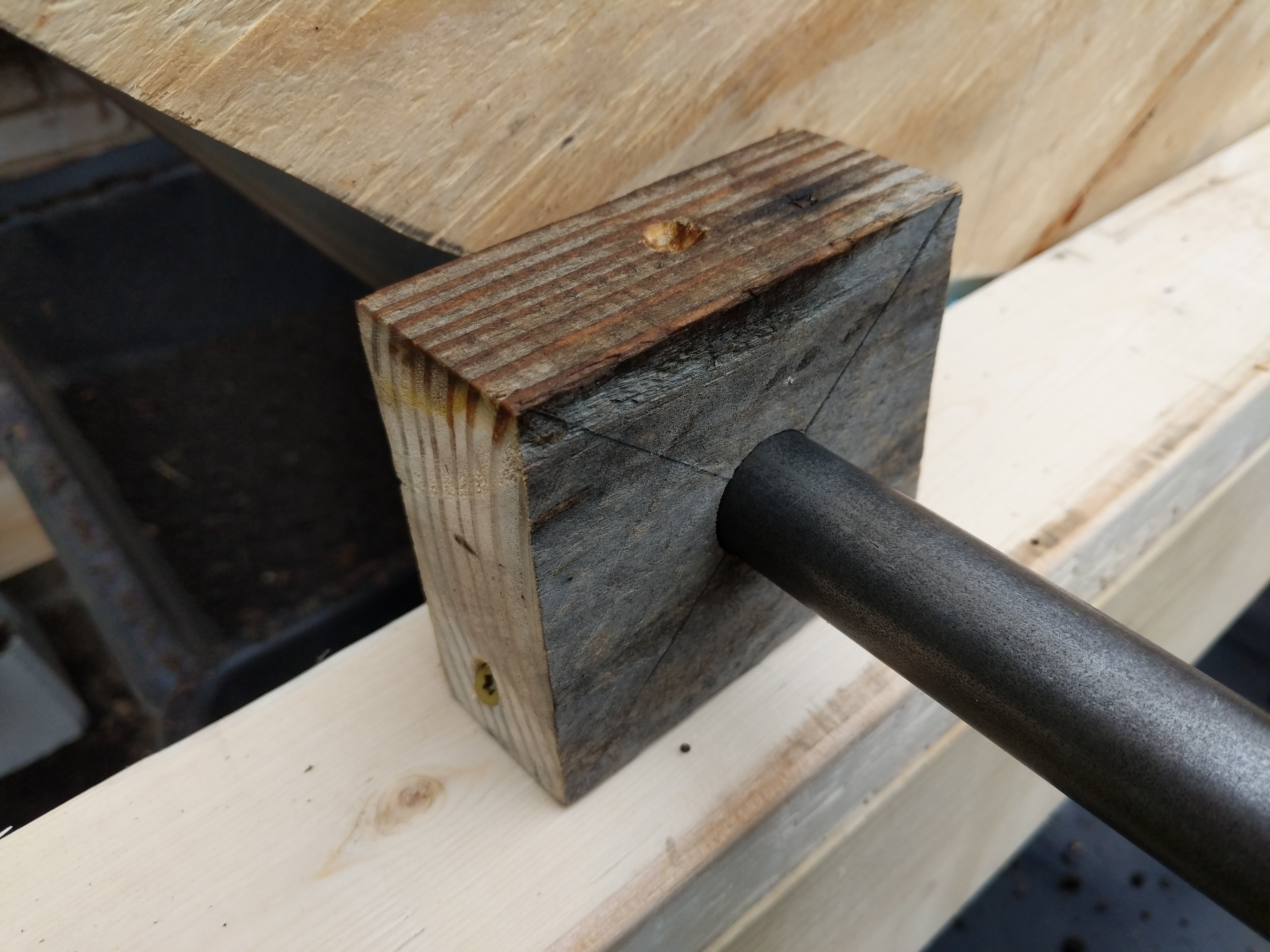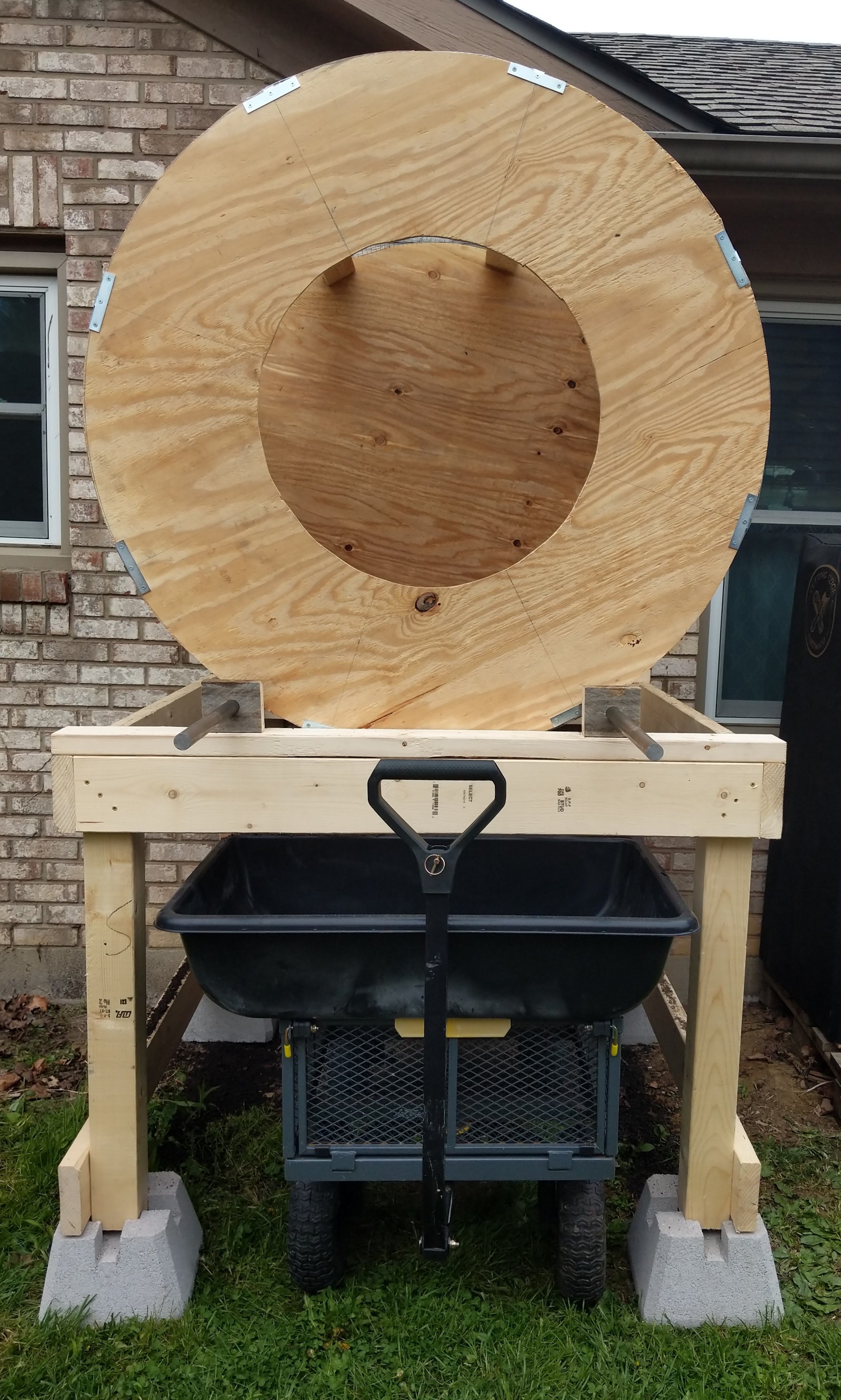The frame and reactor having been roughly assembled, the next step is the drive. Getting that big drum to rotate and be rotated by external forces necessitates a means to transfer that energy. Axles are a fine choice in many cases and in ours will also support the drum. The axles are 1" Cold Rolled 1018 carbon steel and are cut a smidge long so I've got room to play with various means of driving the thing.

Those axles need something to hold them while they spin. Modern ball, roller, and needle bearings are a very new invention on the time scale of all of civilization's mechanical feats. Pillow block bearings can and historically have been made from hardwoods such as oak and beechwood. An old partial pallet was on hand to donate its oak. I made several bearings so to have spares on hand.

The bearings were spaced arbitrarily at 12" medial to the frame's edges and mounted atop a span of 2x4 to distribute the weight more directly into the 4x4 uprights which have the most strength of all frame components to withstand compressive forces. A 1" diameter hole was bored for the axle to pass through, sanded a bit to give a thou of clearance, a hole drilled for lubricant, and the whole bearing was toenailed to the frame. Once the front bearings were fixed, the axles were checked for square in relation to the frame, double checked with the rear bearings' spacing to the lateral edges, and checked again by measuring the distance between the axles and ensuring they were equidistant along the length of them. Once inserted and secured, they were verified to spin. Presently, they're not able to spin freely but will do so with a modest torque. The bearings may be iterated on if it's found that they impose too much friction to make turning the drum difficult once we get to that point.

The next step will be tying the axles together and adding a means to input manual power. Presently, my best idea is a roller-chain and sprockets to distribute power across axles, then I'll grind a hex shape out of the end of an axle to fix a socket to so this can be turned with a ratchet or driver for testing. There's plenty of room to test all this up front but once concepts are solidified I will want to determine if that is still the best course or if it would be wisest to put power components in the back.
 load.nikon
load.nikon
Discussions
Become a Hackaday.io Member
Create an account to leave a comment. Already have an account? Log In.